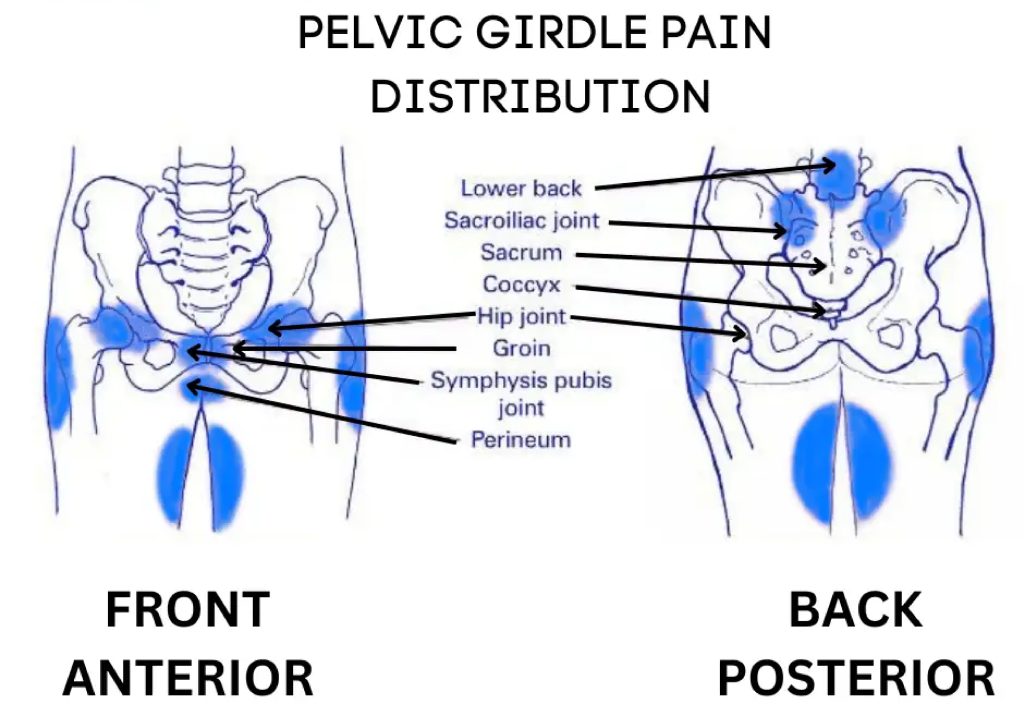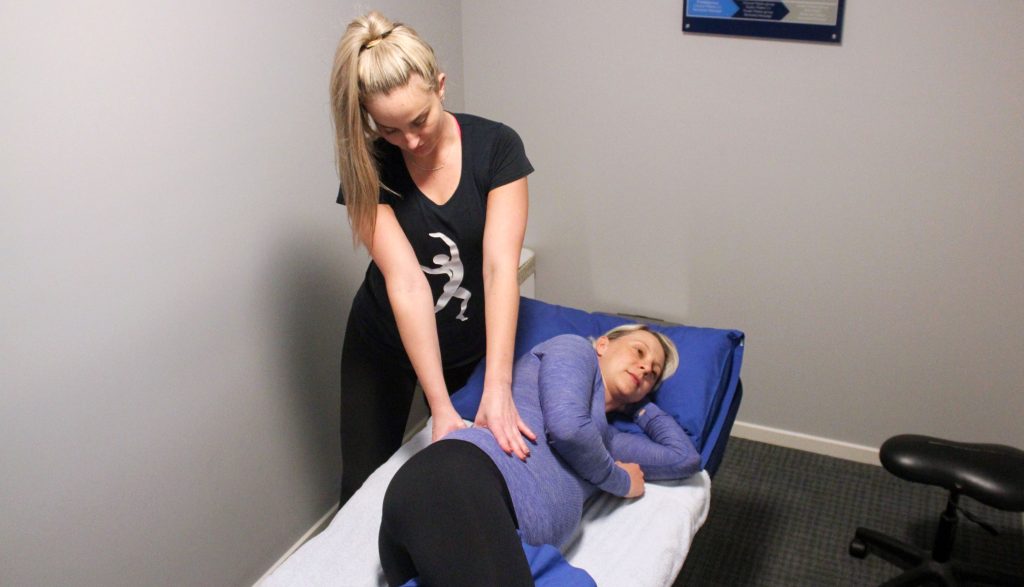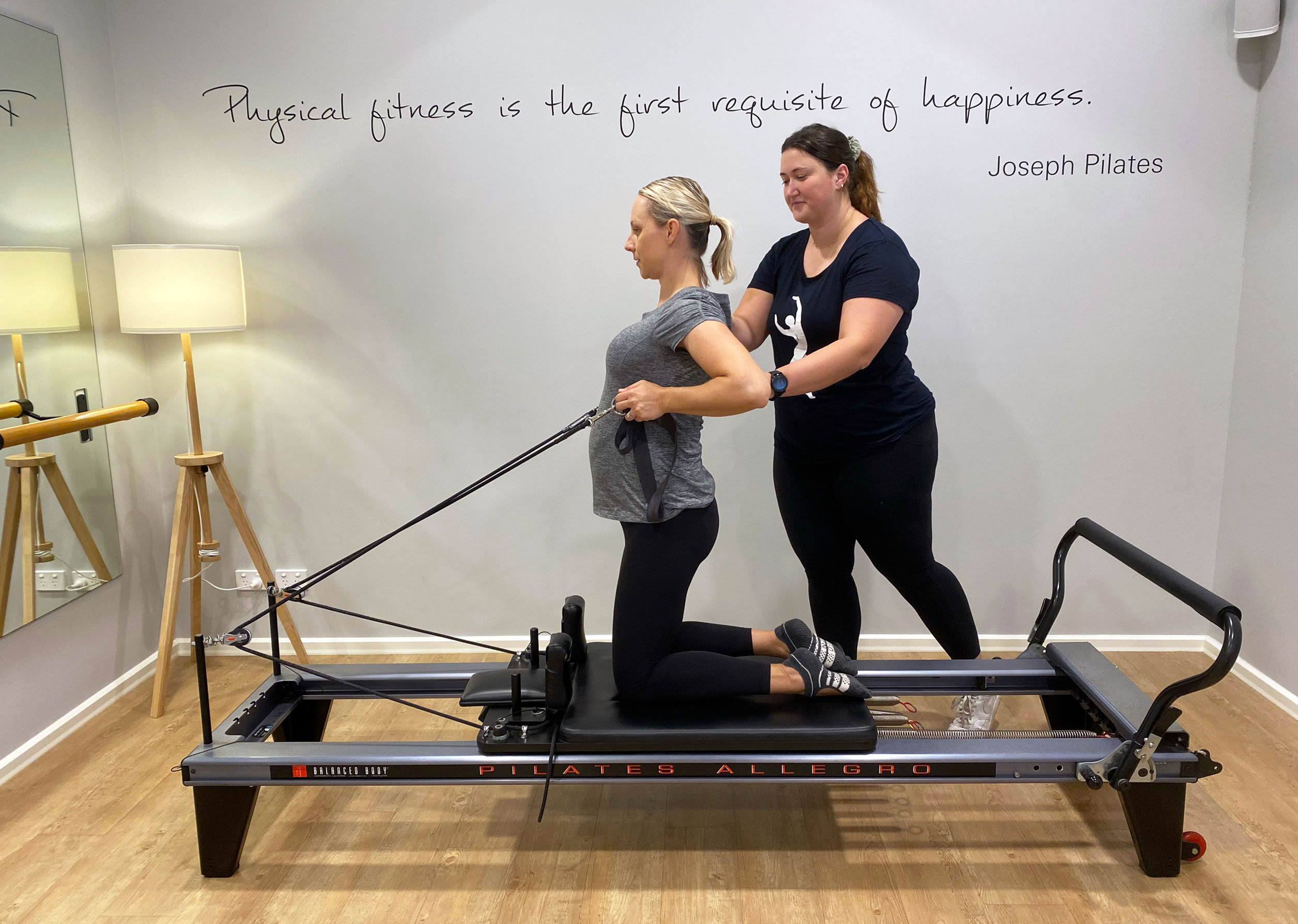What is Pregnancy-related Pelvic Girdle Pain (PrPGP)?
Pregnancy-related Pelvic Girdle Pain is a pain in and around the pelvis that can occur during or after pregnancy. It is reported that approximately 44% of pregnant women will experience some type of pelvic girdle pain throughout their pregnancy. It can persist into the postpartum period, but in most cases, it does resolve on its own after birth. It can be felt in the front or back of the pelvis, sides of the hips, buttocks, and groin and may radiate into the thighs.

What Causes it?
During pregnancy, the pelvis changes to accommodate the growth of the baby. There is an increased load on the pelvis and associated postural changes to accommodate this growth. Pain can then occur due to the new position and change of tension on muscles and ligaments across the joints and in surrounding areas. In the past, the hormone Relaxin has been implicated in causing pain by creating g ligament laxity, however, current research has indicated that although ligament laxity occurs during pregnancy, Relaxin does not play a role in this or the PrPGP experienced.
Some positions and movements can aggravate PrPGP, by increasing the load through the joints, including:
- Sitting cross-legged
- Walking up stairs
- Walking fast with long strides
- Standing with weight on one leg
- Getting out of the car or bed
- Rolling over in bed
- Standing on one leg (e.g. getting dressed)
Sleep
Sleep is a big contributing factor in all types of pain. Disrupted sleep can create increased sensitivity throughout the whole body, and change how pain is perceived. This means that if sleep is disrupted during pregnancy, due to pain, feeling unwell, or difficulty finding a comfortable position with changes in the body, pain levels may increase, and may feel harder to manage. In such cases, it is important to manage sleep patterns, and seek advice on improving sleep.

How can Physiotherapy Help?
Physiotherapy can assist in the prevention and reduction of PrPGP, through a multimodal approach.
Exercise programs, specifically tailored to each stage of pregnancy, have been shown to reduce pain and associated incapacity. This is important during pregnancy, to maintain activity levels for the health of both mother and baby. Physiotherapists and Exercise Physiologists are able to tailor both pilates-based programs as well as Strength and Conditioning programs to address PrPGP, both antenatally and postnatally, for pain reduction and prevention. Stretches, mobility exercises, and strengthening can also be provided for self-management of PrPGP.
Other treatment options for PrPGP include manual therapy for pain management, as well as fitting a pelvic girdle belt and Dry Needling or Acupuncture.
Our Women’s Health Physios are trained in the treatment of Pregnancy-Related Pelvic Girdle Pain. Call 3358 3915 to book a Women’s Health appointment.
Blog written by physiotherapist Nykeela


